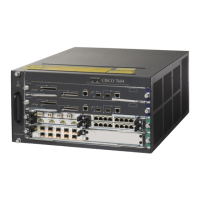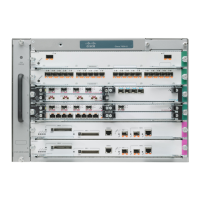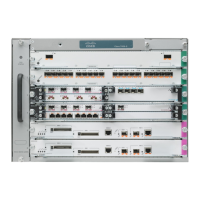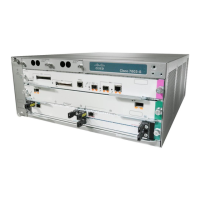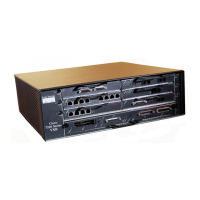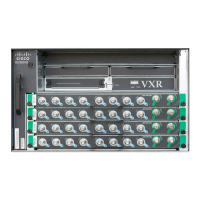32-35
Cisco 7600 Series Router Cisco IOS Software Configuration Guide—12.1E
78-14064-04
Chapter 32 Configuring PFC QoS
Configuring PFC QoS
Creating Named Aggregate Policers
To create a named aggregate policer (see the “Policers” section on page 32-19), perform this task:
Note With PFC2, aggregate policers can be applied to ingress interfaces on multiple modules, but aggregate
policing works independently on each DFC-equipped switching module and independently on the PFC2,
which supports any non-DFC-equipped switching modules. Aggregate policing does not combine flow
statistics from different DFC-equipped switching modules. You can display aggregate policing statistics
for each DFC-equipped switching module and for the PFC2 and any non-DFC-equipped switching
modules supported by the PFC2.
When creating a named aggregate policer, note the following:
• Policing uses the Layer 3 packet size.
• See the “PFC QoS Configuration Guidelines and Restrictions” section on page 32-31 for
information about rate and burst size granularity.
• The valid range of values for the CIR bits_per_second parameter is as follows:
–
Minimum—32 kilobits per second, entered as 32000
–
Maximum—4 gigabits per second, entered as 4000000000
• The normal_burst_bytes parameter sets the CIR token bucket size.
• The maximum_burst_bytes parameter sets the PIR token bucket size.
• When configuring the size of a token bucket, note the following:
–
The minimum token bucket size is 1 kilobyte, entered as 1000 (the maximum_burst_bytes
parameter must be set larger than the normal_burst_bytes parameter)
–
The maximum token bucket size is approximately 32 megabytes, entered as 31250000
–
To sustain a specific rate, set the token bucket size to be at least the rate value divided by 4000,
because tokens are removed from the bucket every 1/4000th of a second (0.25 ms).
–
Because the token bucket must be large enough to hold at least one frame, set the parameter
larger than the maximum Layer 3 packet size of the traffic being policed.
–
For TCP traffic, configure the token bucket size as a multiple of the TCP window size, with a
minimum value at least twice as large as the maximum Layer 3 packet size of the traffic being
policed.
Command Purpose
Router(config)# mls qos aggregate-policer
policer_name bits_per_second normal_burst_bytes
[maximum_burst_bytes] [pir
1
peak_rate_bps]
[[[conform-action {drop | set-dscp-transmit
2
dscp_value | set-prec-transmit
2
ip_precedence_value |
transmit}] exceed-action {drop | policed-dscp |
transmit}] violate-action
1
{drop | policed-dscp |
transmit}]
1. Supported only with PFC2.
2. With PFC2, the set-dscp-transmit and set-prec-transmit keywords are only supported for IP traffic.
Creates a named aggregate policer.
Router(config)# no mls qos aggregate-policer
policer_name
Deletes a named aggregate policer.

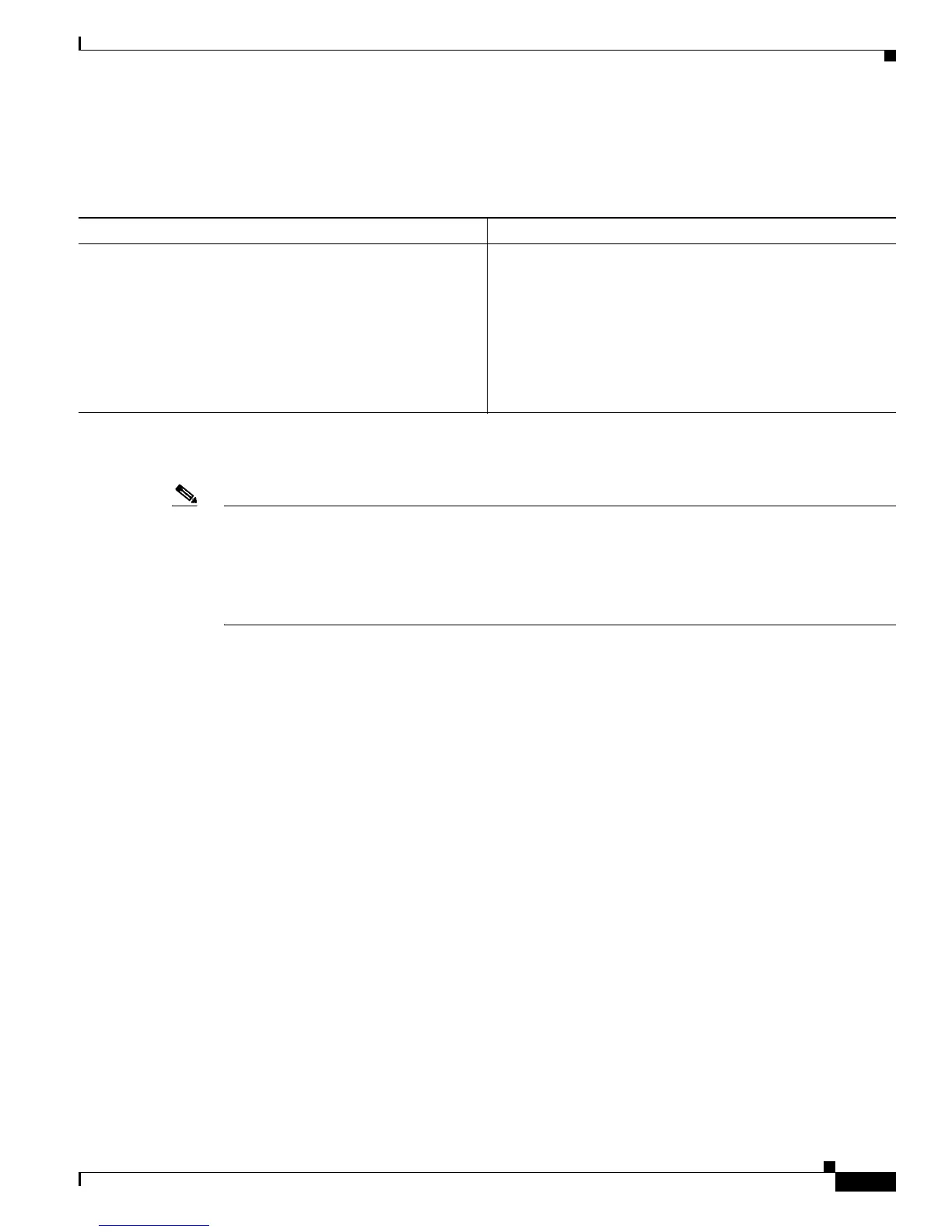